Carolyn Genders describes her processes and discusses the relationship between her 2D and 3D work.
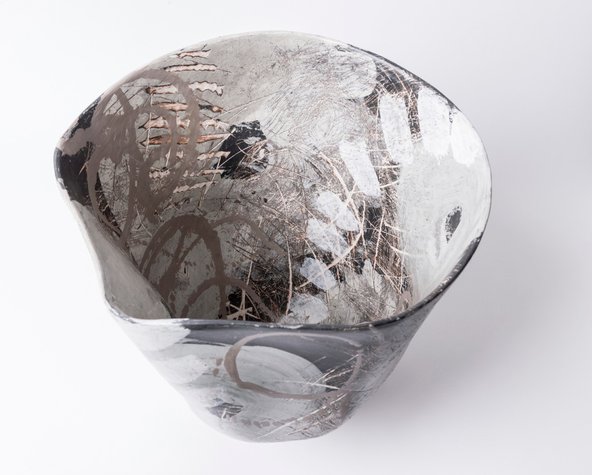
In 2015 I moved to the South Coast and now live and work by the sea. My studio is a wonderful light space with a glazed wall looking out over the roofs to the sea and the ever-changing sky of infinite horizon. It is a space that I love being in, and this change of environment has subtly but significantly altered my work.
Although my focus continues to be surface that interacts with form to create three-dimensional canvases, my inspiration is less physical, more internal.
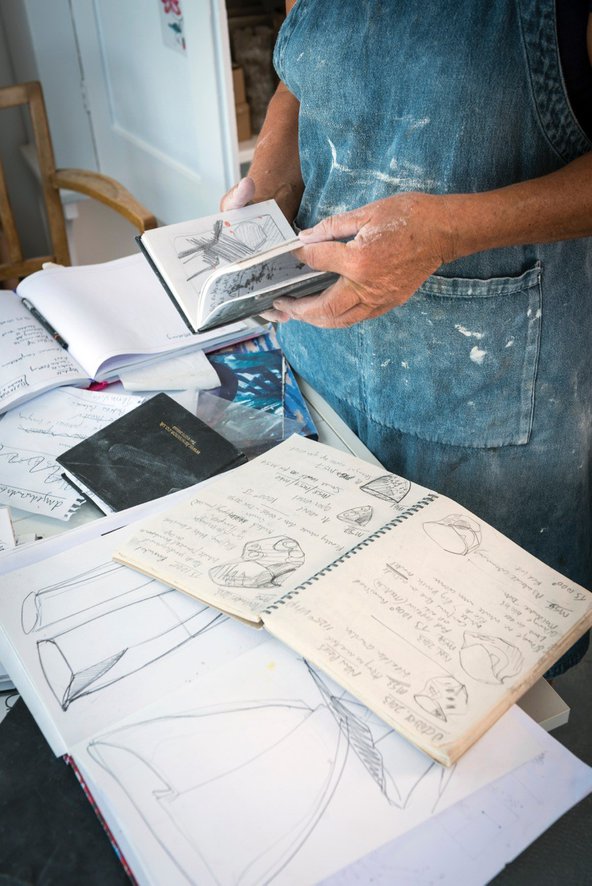
Drawing underpins all my ceramic work. I explore the world in sketches of soft pencil or black felt tip marker and rarely use colour, which I find distracting. For me, drawings are more intimate than photographs; I draw to see and experience the visual in a tangible way. The act of putting pencil to paper is inspirational.
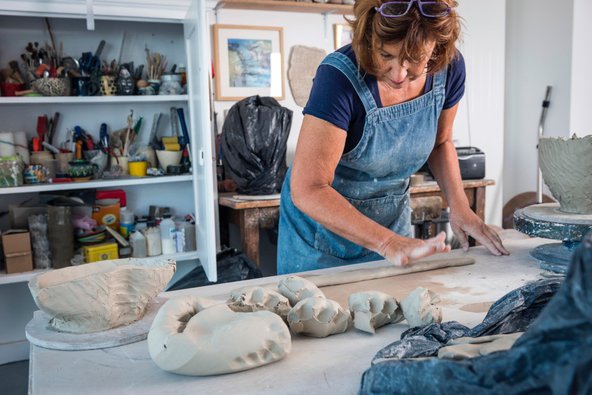
I am proud to be part of an ancient ceramic tradition using early techniques in a contemporary way. There is no definitive way of coiling, and I have adapted my technique throughout the years according to the forms I make and the strength of my hands.
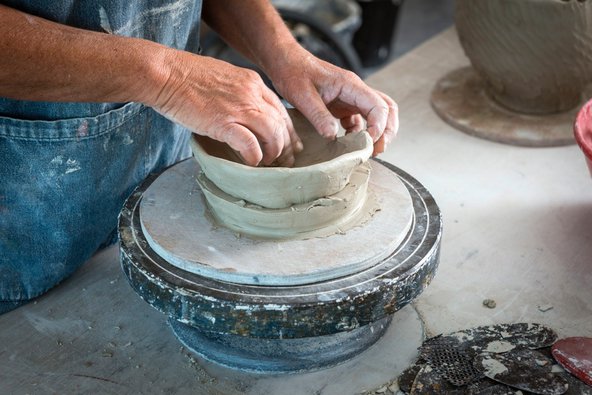
The process of making is organic and I make intuitively without reference to drawings.
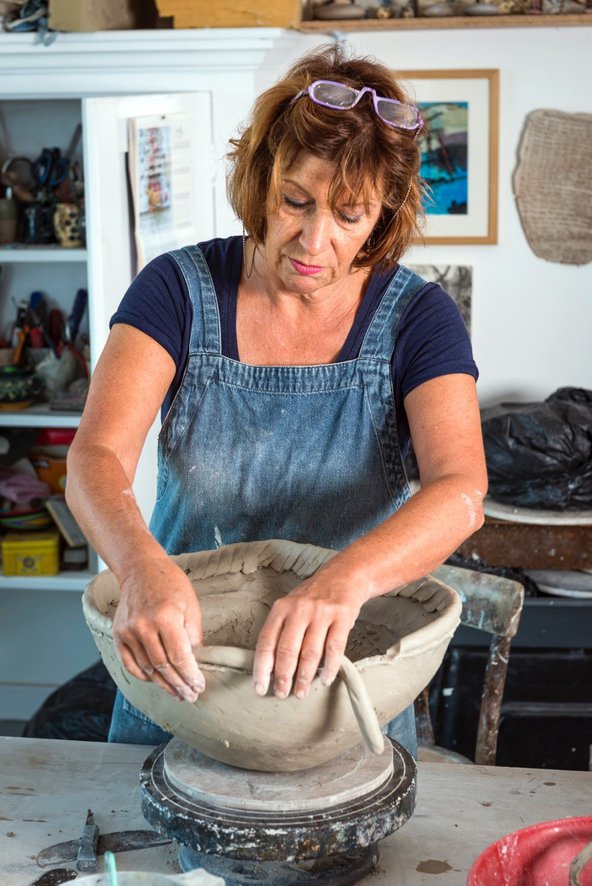
The essence of my practice is abstraction but after 30 years of ceramic practice, the acts of looking, analysing and interpreting what I see, feels part of my artistic DNA.
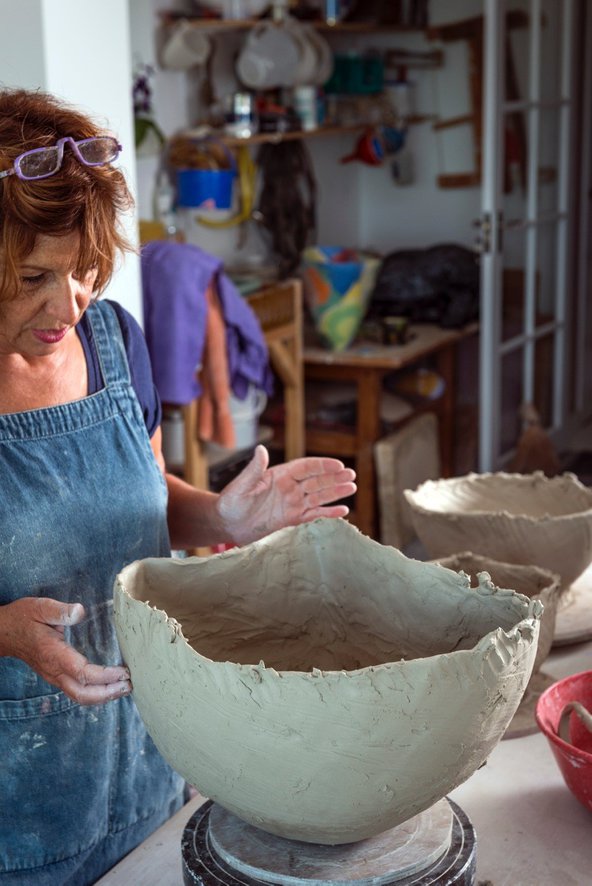
Most of my influences are not ceramic and if pushed I would describe myself as a Modern Abstract Expressionist.
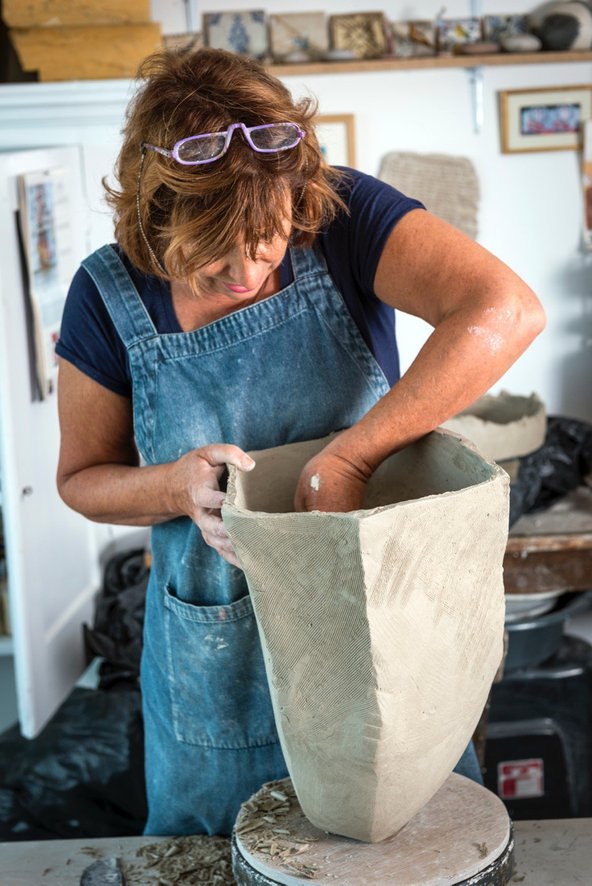
Once I have roughed out the shape, building quickly with big flat coils joined by pulling up and together, I scrape and smooth the clay until the form is finished. This is a slow and mindful process and by the time the form is ready for slip I have a good idea of how I will tackle the surface.
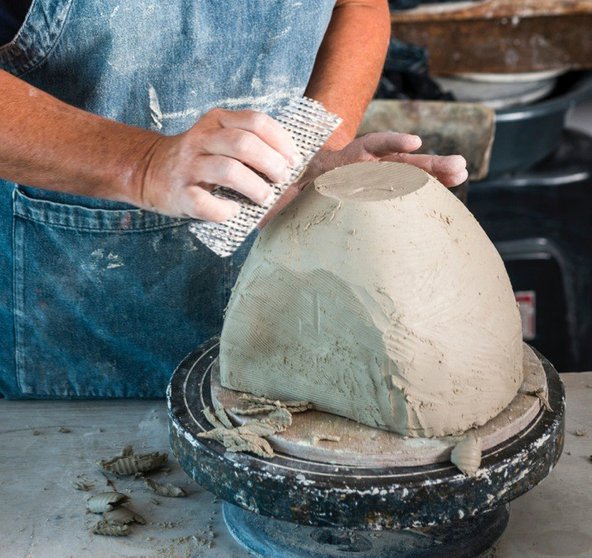
The warmth and smoothness of the scraped and polished surface entices me to pick up my brushes.
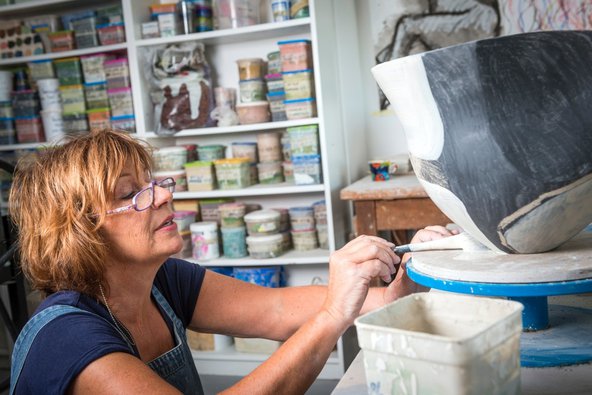
I approach a form as I do a canvas, roughing in background, applying layers of slip. The transformation from pale naked clay to dark mysterious richness I find enthralling. I begin the composition, highlighting with colour, continuing what I call the base - overlapping coloured shapes. Why don’t I just paint canvases? Because a three-dimensional surface is always an adventure.
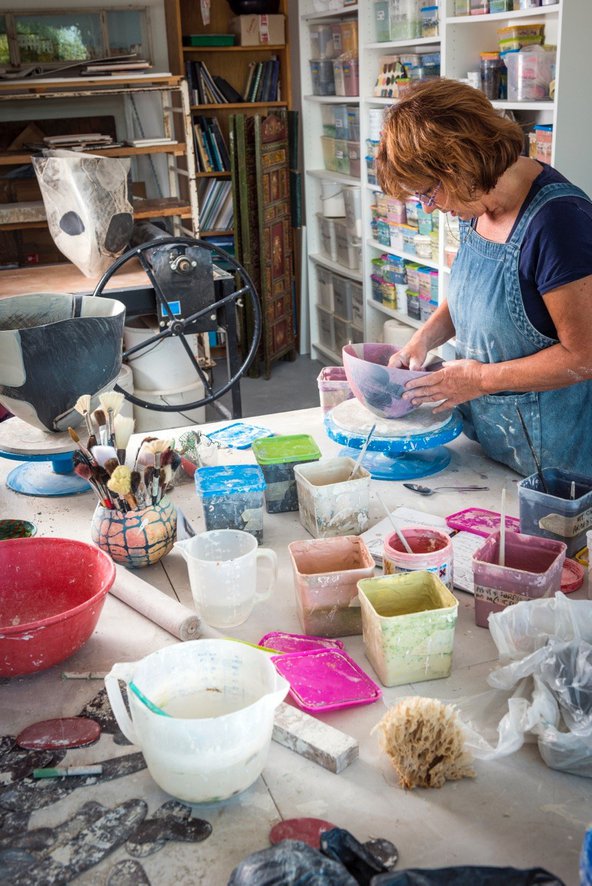
I use vitreous slip on the surface of the vessel. It is the perfect ceramic medium for a painterly effect. Halfway between a slip and a glaze, it has the versatility and immediacy of paint, but the slip becomes part of the clay rather than sitting on the surface, as paint does. Vitreous slip can be applied in the same way as paint; it has the subtlety of water colour when thinly mixed, and achieves surfaces similar to that of opaque acrylics when mixed to the consistency of single cream. It is possible to build up layers of colour and to paint freely, creating rich textural surfaces. Only one firing is necessary - the silky matt finish is enough.
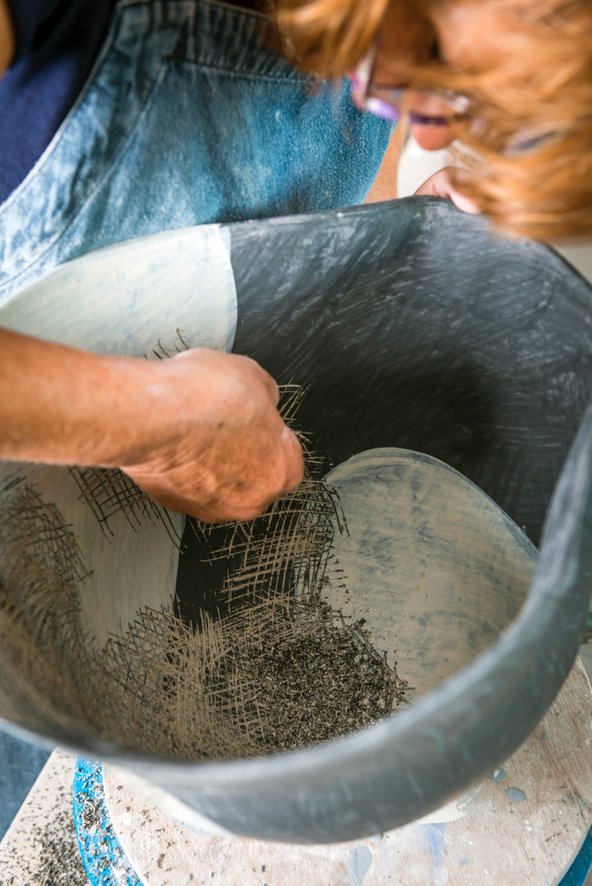
I have a comprehensive collection of brushes, each selected for its own characteristic: hard, soft, fat, wide, nylon or bristle. As they wear they make particular marks and often become more valuable for that. Tools, too: I look out for and buy utensils from cook shops and builders merchants, or collect sharp pieces of shell on the beach, and of course make my own with which to make sgraffito marks.
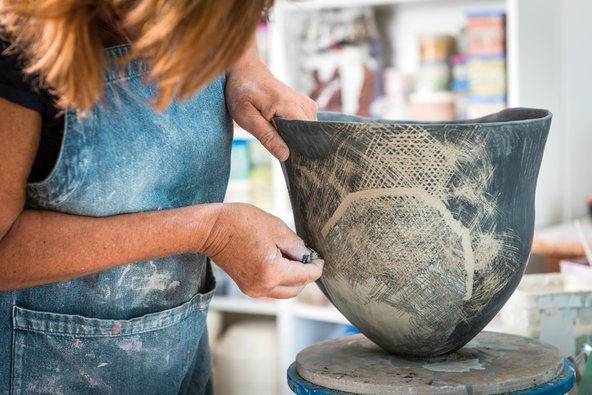
I scratch into the surface between painting the colours. The sgraffito affects the next layer of slip, creating a ghost of the marks underneath and adding a textural quality to the coloured shapes.
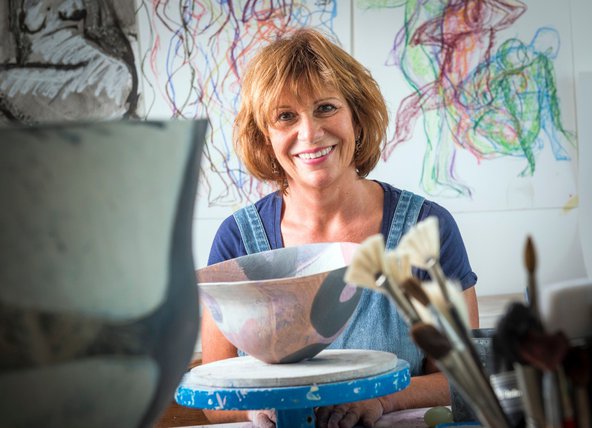
I finally reach a point where I instinctively know that the piece is finished. I put it aside, covering it so it doesn’t dry out completely, but return several times to look at it and make final adjustments. I fire in an electric kiln to the point of vitrification. Although I have a good idea of how it will look when it comes out of the kiln I am constantly excited by the possibility of the unexpected.
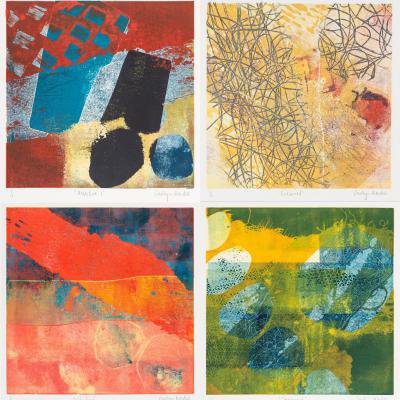
I feel that my practice is richer for the experience of working in different media. My print making process is similar to my ceramic process and therefore transferable. I have found this parallel activity inspires and influences my ceramics and vice versa. Nothing will ever replace my passion for the ceramic process, but I am spellbound by the immediacy of colour achieved when printing. Ceramic colour only appears after firing.
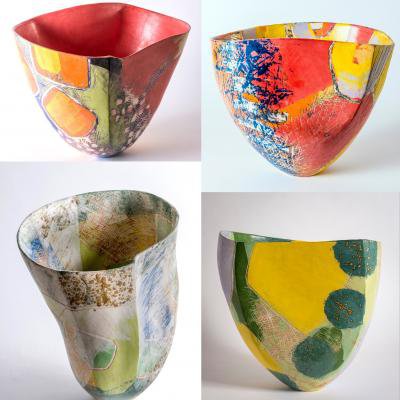
Over the years I have made vessels, drawings and prints that are seminal – that change my perception of what I do. BUT I am not particularly attached to the finished piece. Often asked if I have a favourite, I reply ‘Yes the one I have yet to make’.